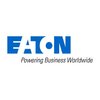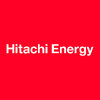


i
Tata
Power
Work with us
![]()
Proud winner of ABECA 2025 - AmbitionBox Employee Choice Awards
Filter interviews by
Tata Power Safety Officer Interview Questions and Answers
8 Interview questions
JSA focuses on specific job tasks while HIRA assesses risks across the entire work area.
JSA (Job Safety Analysis) is a process of identifying potential hazards associated with specific job tasks.
HIRA (Hazard Identification and Risk Assessment) is a broader approach that assesses risks across the entire work area.
JSA is more task-oriented, while HIRA is more comprehensive and considers all potential hazards and ris...
PTW stands for Permit to Work. It is a formal written system used to control high-risk activities in the workplace.
PTW is a document that outlines the work to be done, the hazards involved, and the necessary precautions.
It ensures that proper authorization and safety measures are in place before starting any high-risk task.
Different types of PTW include Hot Work Permit, Confined Space Entry Permit, Electrical Work...
Safety is the state of being protected from harm, danger, or injury.
Safety refers to the measures taken to prevent accidents, injuries, and hazards.
It involves identifying and assessing potential risks and implementing strategies to mitigate them.
Safety includes creating a safe working environment, providing proper training and equipment, and promoting awareness and adherence to safety protocols.
Examples of safety...
PTW stands for Permit to Work. It is a formal document that authorizes and controls work activities in hazardous environments.
PTW is used to ensure that proper safety measures are in place before starting any work.
It outlines the scope of work, potential hazards, and necessary precautions.
PTW is typically issued by a designated authority or safety officer.
Examples of PTW include hot work permits, confined space en...
PPE stands for Personal Protective Equipment.
PPE refers to protective clothing, helmets, goggles, or other garments or equipment designed to protect the wearer's body from injury or infection.
It is used in various industries and occupations to minimize exposure to hazards and ensure worker safety.
Examples of PPE include safety helmets, gloves, safety glasses, respirators, earplugs, and high-visibility clothing.
PPE...
A hazard is a potential source of harm or danger that can cause injury, illness, or damage to property.
A hazard is any condition, substance, or activity that has the potential to cause harm.
Hazards can be physical, chemical, biological, ergonomic, or psychosocial in nature.
Examples of hazards include slippery floors, toxic chemicals, infectious diseases, repetitive motion, and workplace stress.
Identifying and asse...
JSA stands for Job Safety Analysis. It is a systematic process used to identify and mitigate potential hazards in the workplace.
JSA involves breaking down a job into individual tasks and analyzing the hazards associated with each task.
It helps in identifying potential risks and developing control measures to prevent accidents or injuries.
JSA promotes worker involvement and communication to ensure a safe work envir...
Isolation is the process of separating hazardous energy sources to protect workers from potential harm.
Isolation involves identifying and controlling energy sources.
The process includes de-energizing equipment, locking and tagging out energy sources, and verifying isolation.
Examples of isolation methods include electrical lockout/tagout, valve lockout/tagout, and confined space isolation.
Isolation procedures shoul...
Tata Power Safety Officer Interview Experiences
5 interviews found

Aptitude test, reasoning test and English test
And technical
(4 Questions)
- Q1. Technical questions
- Q2. What is your role and responsibilities
- Ans.
The role of a Safety Officer is to ensure the safety and well-being of individuals in a workplace or environment.
Develop and implement safety policies and procedures
Conduct regular safety inspections and audits
Identify and assess potential hazards and risks
Train employees on safety protocols and emergency procedures
Investigate accidents and incidents, and provide recommendations for prevention
Maintain safety records an...
- Q3. What is PTW & type ofPTW
- Ans.
PTW stands for Permit to Work. It is a formal written system used to control high-risk activities in the workplace.
PTW is a document that outlines the work to be done, the hazards involved, and the necessary precautions.
It ensures that proper authorization and safety measures are in place before starting any high-risk task.
Different types of PTW include Hot Work Permit, Confined Space Entry Permit, Electrical Work Perm...
- Q4. Isolation and it's process
- Ans.
Isolation is the process of separating hazardous energy sources to protect workers from potential harm.
Isolation involves identifying and controlling energy sources.
The process includes de-energizing equipment, locking and tagging out energy sources, and verifying isolation.
Examples of isolation methods include electrical lockout/tagout, valve lockout/tagout, and confined space isolation.
Isolation procedures should be ...
Interview Preparation Tips
I applied via Walk-in and was interviewed before May 2022. There were 2 interview rounds.

(4 Questions)
- Q1. Total experience
- Ans.
Total 6.7 years 4 company
- Q2. Safety 7 year or other
- Q3. Now current salary
- Q4. Expected salary
- Ans.
I would expect a salary that is competitive and reflective of my experience and qualifications.
Research the average salary range for Safety Officers in your area and industry.
Consider your level of experience, education, and certifications.
Highlight any additional skills or qualifications that may warrant a higher salary.
Be prepared to negotiate and discuss benefits and perks as part of the overall compensation package...
Interview Preparation Tips

(3 Questions)
- Q1. Manual excavation or pit
- Q2. HDD and cable pulling
- Q3. Testing cable and TBT
Interview Preparation Tips
From Msbte
I applied via Job Portal and was interviewed before Nov 2022. There were 4 interview rounds.

(1 Question)
- Q1. Nothing much just about personal details & Professional details
(7 Questions)
- Q1. Different between JSA & HIRA
- Ans.
JSA focuses on specific job tasks while HIRA assesses risks across the entire work area.
JSA (Job Safety Analysis) is a process of identifying potential hazards associated with specific job tasks.
HIRA (Hazard Identification and Risk Assessment) is a broader approach that assesses risks across the entire work area.
JSA is more task-oriented, while HIRA is more comprehensive and considers all potential hazards and risks.
JS...
- Q2. What is mock drill
- Ans.
A mock drill is a simulated emergency exercise conducted to test the preparedness and response of individuals and organizations.
Mock drills are often conducted in workplaces, schools, hospitals, and public spaces to practice emergency procedures.
They can involve scenarios such as fire drills, earthquake drills, active shooter drills, etc.
Participants are expected to follow the established protocols and procedures as if...
- Q3. Tell me about yourself spacially what is your job responsibilities in current company
- Ans.
I am currently working as a Safety Officer in my current company.
My job responsibilities include ensuring compliance with safety regulations and standards.
I conduct regular safety inspections and audits to identify potential hazards and risks.
I develop and implement safety policies and procedures to promote a safe working environment.
I provide safety training to employees and conduct drills to prepare for emergencies.
I...
- Q4. Some question regarding your current job in detail
- Q5. Some height work related questions
- Q6. Electrical safety related questions
- Q7. MIS related questions
(1 Question)
- Q1. Salary discussion if selected
Interview Preparation Tips
I applied via Campus Placement and was interviewed in Jun 2021. There were 3 interview rounds.
Interview Questionnaire
5 Questions
- Q1. What is safety ?
- Ans.
Safety is the state of being protected from harm, danger, or injury.
Safety refers to the measures taken to prevent accidents, injuries, and hazards.
It involves identifying and assessing potential risks and implementing strategies to mitigate them.
Safety includes creating a safe working environment, providing proper training and equipment, and promoting awareness and adherence to safety protocols.
Examples of safety meas...
- Q2. What is hazard ?
- Ans.
A hazard is a potential source of harm or danger that can cause injury, illness, or damage to property.
A hazard is any condition, substance, or activity that has the potential to cause harm.
Hazards can be physical, chemical, biological, ergonomic, or psychosocial in nature.
Examples of hazards include slippery floors, toxic chemicals, infectious diseases, repetitive motion, and workplace stress.
Identifying and assessing...
- Q3. What is PPE's?
- Ans.
PPE stands for Personal Protective Equipment.
PPE refers to protective clothing, helmets, goggles, or other garments or equipment designed to protect the wearer's body from injury or infection.
It is used in various industries and occupations to minimize exposure to hazards and ensure worker safety.
Examples of PPE include safety helmets, gloves, safety glasses, respirators, earplugs, and high-visibility clothing.
PPE shou...
- Q4. What is PTW?
- Ans.
PTW stands for Permit to Work. It is a formal document that authorizes and controls work activities in hazardous environments.
PTW is used to ensure that proper safety measures are in place before starting any work.
It outlines the scope of work, potential hazards, and necessary precautions.
PTW is typically issued by a designated authority or safety officer.
Examples of PTW include hot work permits, confined space entry p...
- Q5. What is JSA?
- Ans.
JSA stands for Job Safety Analysis. It is a systematic process used to identify and mitigate potential hazards in the workplace.
JSA involves breaking down a job into individual tasks and analyzing the hazards associated with each task.
It helps in identifying potential risks and developing control measures to prevent accidents or injuries.
JSA promotes worker involvement and communication to ensure a safe work environmen...
Interview Preparation Tips
Top trending discussions






Interview questions from similar companies

(2 Questions)
- Q1. What is your favorite food
- Ans.
I love a hearty bowl of spaghetti carbonara, with creamy sauce, crispy pancetta, and a sprinkle of parmesan cheese.
The creamy texture of the sauce complements the al dente pasta perfectly.
Crispy pancetta adds a savory crunch that elevates the dish.
A sprinkle of freshly grated parmesan enhances the flavor profile.
It's a comforting meal that reminds me of family gatherings.
- Q2. Non veg all items

I applied via Referral and was interviewed before Jan 2022. There were 2 interview rounds.

(2 Questions)
- Q1. Previous working details salary leave and reason of retrenchment
- Q2. Why u want to join our organization and what u expect from us and salary..
Interview Preparation Tips
I applied via Naukri.com and was interviewed in Sep 2022. There were 4 interview rounds.

Generally, a case study can highlight nearly any individual, group, organization, event, belief system, or action. A case study does not necessarily have to be one observation, but may include many observations one or multiple individuals and entities across multiple time periods, all within the same case study.
(3 Questions)
- Q1. What are the 3 safety words?
- Ans.
The 3 safety words are: prevent, protect, and respond.
Prevent: Taking proactive measures to avoid accidents or hazards.
Protect: Ensuring the safety and well-being of individuals and property.
Respond: Reacting promptly and effectively in case of emergencies or incidents.
- Q2. What is OSHA and ISO?
- Ans.
OSHA stands for Occupational Safety and Health Administration, while ISO stands for International Organization for Standardization.
OSHA is a government agency in the United States that sets and enforces workplace safety and health regulations.
It ensures that employers provide a safe and healthy working environment for their employees.
OSHA conducts inspections, issues citations and penalties for non-compliance, and prov...
- Q3. Which ISO is safety?
- Ans.
ISO 45001 is the safety standard.
ISO 45001 is the international standard for occupational health and safety management systems.
It provides a framework to improve employee safety, reduce workplace risks, and create better and safer working conditions.
ISO 45001 is designed to be integrated with other management systems such as ISO 9001 and ISO 14001.
It replaces the previous standard OHSAS 18001.
(2 Questions)
- Q1. What Is HR’s Role in Safety?
- Ans.
HR plays a crucial role in safety by developing policies, training employees, and ensuring compliance with regulations.
HR develops safety policies and procedures to create a safe work environment.
HR conducts safety training programs to educate employees on best practices and emergency procedures.
HR ensures compliance with safety regulations and conducts audits to identify and address potential hazards.
HR investigates a...
- Q2. How many experience in this field.?
- Ans. I'm working in this field from 5 plus years.
Interview Preparation Tips

I applied via Walk-in and was interviewed before Apr 2021. There were 3 interview rounds.
How your mind work.
(1 Question)
- Q1. Site related questions.
Interview Preparation Tips

I applied via Company Website and was interviewed before Sep 2020. There was 1 interview round.
Interview Questionnaire
2 Questions
- Q1. What is safety?.
- Ans.
Safety is the state of being protected from harm, danger, or injury.
Safety involves identifying and assessing potential hazards
Implementing measures to control or eliminate those hazards
Providing training and education to prevent accidents
Maintaining equipment and facilities to ensure they are safe to use
Encouraging a culture of safety in the workplace
Examples include wearing personal protective equipment, following sa...
- Q2. What's safety officer duties?.
- Ans.
Safety officer duties include ensuring compliance with safety regulations, identifying and mitigating hazards, and promoting a culture of safety.
Develop and implement safety policies and procedures
Conduct safety inspections and audits
Investigate accidents and incidents
Provide safety training to employees
Maintain safety records and reports
Collaborate with management and employees to promote safety culture
Interview Preparation Tips
Tata Power Interview FAQs
Tell us how to improve this page.
Tata Power Interviews By Designations
- Tata Power Lead Engineer Interview Questions
- Tata Power Graduate Engineer Trainee (Get) Interview Questions
- Tata Power Team Lead Interview Questions
- Tata Power Safety Officer Interview Questions
- Tata Power Management Trainee Interview Questions
- Tata Power Electrical Engineer Interview Questions
- Tata Power Diploma Electrical Engineer Interview Questions
- Tata Power Intern Interview Questions
- Show more
Interview Questions for Popular Designations
Overall Interview Experience Rating
based on 4 interview experiences
Difficulty level
Duration
Interview Questions from Similar Companies
Tata Power Safety Officer Reviews and Ratings
based on 13 reviews
Rating in categories
|
Lead Engineer
813
salaries
| ₹3.2 L/yr - ₹12.5 L/yr |
|
Team Lead
274
salaries
| ₹7.6 L/yr - ₹13.2 L/yr |
|
Assistant Manager
186
salaries
| ₹5.8 L/yr - ₹17.5 L/yr |
|
Manager
182
salaries
| ₹7.2 L/yr - ₹27 L/yr |
|
Graduate Engineer Trainee (Get)
157
salaries
| ₹5.5 L/yr - ₹7 L/yr |

Adani Group

Suzlon Group

Eaton

Hitachi Energy
- Home >
- Interviews >
- Tata Power Interview Questions











